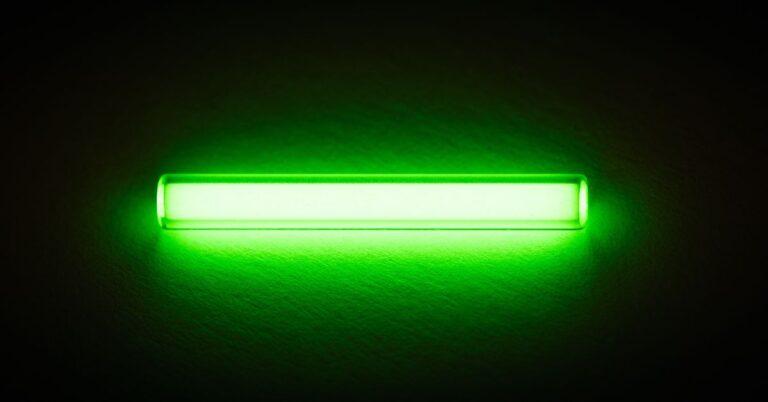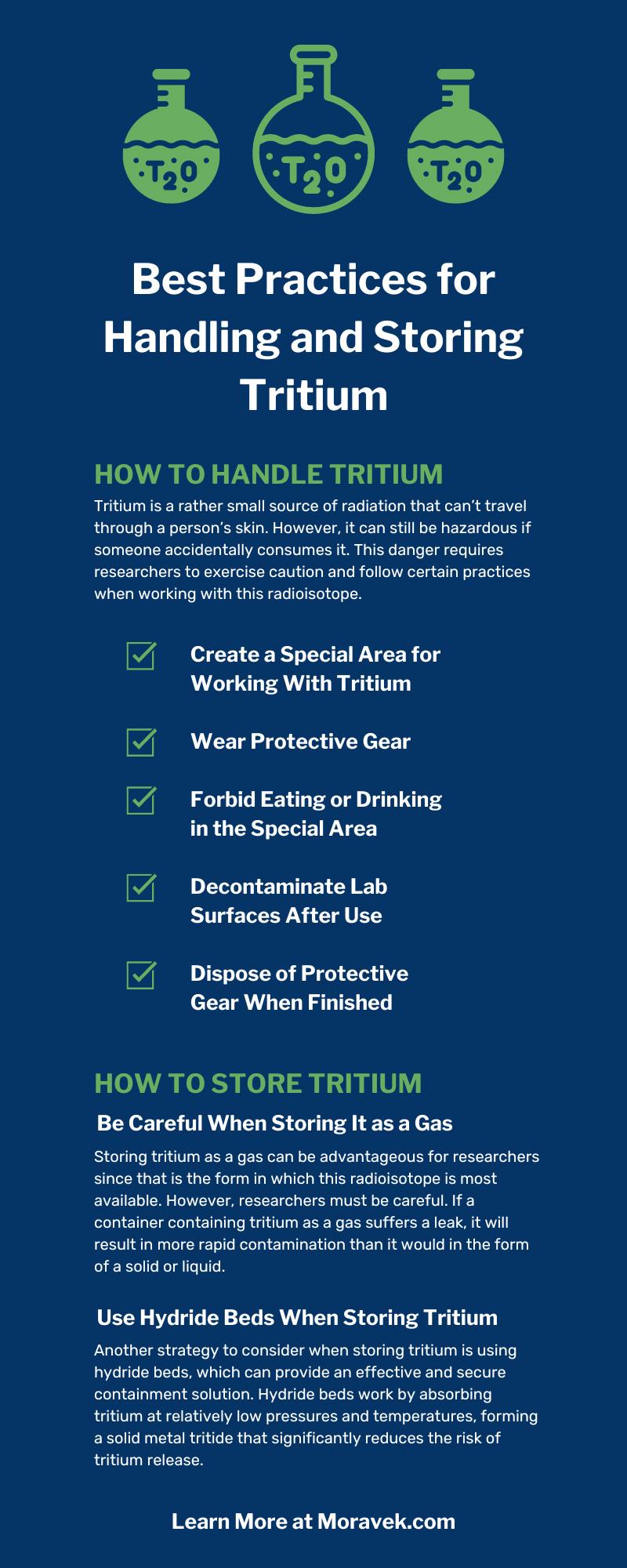
When pharmaceutical companies need to monitor how people metabolize drugs that they are testing, they often turn to tritium. This radioisotope is useful in the radiolabeling process as researchers strive to preserve people’s safety in the consumption of pharmaceuticals. However, it requires stringent controls when used in labs. Read on for a guide outlining the best practices for handling and storing tritium.
How To Handle Tritium
Tritium is a rather small source of radiation that can’t travel through a person’s skin. However, it can still be hazardous if someone accidentally consumes it. This danger requires researchers to exercise caution and follow certain practices when working with this radioisotope.
Create a Special Area for Working With Tritium
One practice that researchers should follow when working with tritium is establishing a specially designated area for their work. This is essential for maintaining a controlled environment and preventing cross-contamination.
Mark your space clearly with appropriate signage indicating the presence of radioactive materials and restrict access to trained personnel only. Researchers should also equip the area with specialized containment systems, such as fume hoods with proper filtration, to capture any tritiated vapors that the material may release during procedures.
Surfaces should consist of materials that are easy for workers to decontaminate, such as stainless steel. Additionally, personnel should regularly monitor the space for any signs of contamination using appropriate detection equipment. This segregation minimizes the risk of accidental exposure and environmental contamination, improving your company’s overall safety and regulatory compliance.
Wear Protective Gear
Another best practice for handling tritium is using protective gear as you work with it. Researchers must wear items such as lab coats, gloves, and protective eyewear that will shield them from potential radiation exposure. Additionally, they may need to use masks or respirators to prevent them from inhaling tritiated water vapor.
Forbid Eating or Drinking in the Special Area
To further mitigate the risk of contamination, you need to prohibit your workers from eating and drinking in the designated tritium handling area. Ingesting food or beverages within this space increases the risk of a researcher exposing themselves internally to tritium.
Strict adherence to this rule ensures that any accidental contamination doesn’t lead to ingestion, thereby safeguarding the health and safety of personnel. Posting clear signage and providing employees with training on safe practices can help you enforce compliance with this essential safety practice.
Decontaminate Lab Surfaces After Use
Thorough decontamination of lab surfaces after handling tritium is essential for preventing residual contamination and reducing the risk of accidental exposure. You must clean all work surfaces, equipment, and tools used in the handling of tritium with appropriate decontamination agents.
In addition, conduct wipe tests to confirm the removal of radioactive contaminants, and address any discovery of contamination immediately. Make sure you equip your laboratory spaces with decontamination kits and train your employees so that they follow standard decontamination procedures meticulously. Proper decontamination ensures a safer working environment and facilitates regulatory compliance by maintaining low levels of radioactive contamination.
Dispose of Protective Gear When Finished
You should also dispose of your protective gear after handling tritium. Carefully remove your used protective clothing, such as lab coats, gloves, and respirators.
Place the gear into designated radioactive waste containers that you have clearly labeled. Use containers that consist of durable, leak-proof materials.
Personnel should follow established protocols for removing and disposing of this gear to minimize exposure to any residual radioactivity. You should perform regular audits and training sessions to ensure adherence to these disposal guidelines, thus allowing you to maintain a safe and controlled environment.
How To Store Tritium
Storing tritium before or after lab work also requires several important considerations.
Be Careful When Storing It as a Gas
Storing tritium as a gas can be advantageous for researchers since that is the form in which this radioisotope is most available. However, researchers must be careful. If a container containing tritium as a gas suffers a leak, it will result in more rapid contamination than it would in the form of a solid or liquid.
Use Hydride Beds When Storing Tritium
Another strategy to consider when storing tritium is using hydride beds, which can provide an effective and secure containment solution. Hydride beds work by absorbing tritium at relatively low pressures and temperatures, forming a solid metal tritide that significantly reduces the risk of tritium release.
This method benefits from the stability and efficiency of hydride materials, which can safely bind large amounts of tritium within a compact form. The storage containers designed for hydride beds are typically robust, leak-proof, and made from materials compatible with tritium.
In addition, the beds will take out impurities from your tritium whenever you put it into storage or retrieve it, allowing you to work with a less contaminated radioisotope. By using hydride beds for solid tritium storage, you can achieve a higher level of containment security, mitigating the risks associated with tritium leakage and exposure.
Consider Disposing of Tritium After Use
Given the potential hazards associated with tritium, you may also want to consider forgoing storage and disposing of it properly after you use it to ensure the safety of your work environment. If you choose this option, make sure you follow established protocols for its disposal.
This may involve transferring the tritium to an authorized disposal facility that has the proper equipment to handle radioactive waste safely. The disposal process typically requires meticulous documentation, including tracking the quantity of tritium, its form, and the procedures followed for secure transport. By prioritizing the disposal of tritium after its intended use, organizations can significantly reduce long-term risks to personnel, the environment, and regulatory compliance, ensuring that they manage radioactive materials responsibly and effectively.
By following these practices when working with tritium, you can better manage the risks of contamination from this radioisotope. If you’re looking for a tritium labeling services provider with extensive expertise, contact Moravek. We can connect you with the right labeling method that will meet the needs of your research project and your budget.

